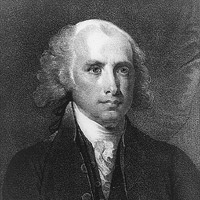 |

完成權利法案的詹姆士‧麥迪遜在1828年成為美國總統

|
 |
|
 |
新興的美國於1791年12月15日通過權利法案 (Bill
of Rights)
梅森在1776年完成了維吉尼亞州的州憲法草案,強調不能剝奪權利的原則:亦即有某些個人權利是不能被剝削的。
而剛當選美國眾議員的詹姆士‧麥迪遜 (James
Madison) 也同意梅森的看法。在1789年的秋天,麥迪遜為美國憲法的十項修正案發言,他支持人民擁有宗教、言論,以及出版自由。最後,喬治‧梅森的論點贏得支持。當詹姆士‧麥迪遜開始起草將成為「權利法案」的憲法十項修正案時,他就相當重視維吉尼亞州通過之人權宣言裡的各個概念與精神。
Mason had drafted the Virginia state constitution in 1776, asserting the principle of inalienable rights--certain individual rights that cannot be taken away.
Elected to the new House of Representatives, James Madison agreed with Mason. In the fall of 1789, he sponsored the first 10 amendments to the Constitution, speaking out on freedom of religion, speech, and the press. Ultimately, George Mason's views prevailed. When James Madison drafted the 10 amendments to the Constitution that were to become the Bill of Rights, he drew heavily upon the ideas put forth in the Virginia Declaration of Rights.

 2/4 頁
2/4 頁

|





